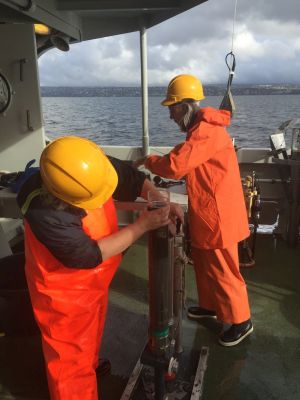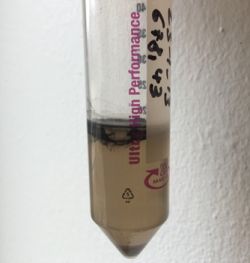Booking and prices
This laboratory is only for use in research and teaching activities at the Dept. of Geosciences.
Contact information:
Facility Managers for the MicroPalLab:
– Micropaleontology: Elisabeth Alve
– Palynology: Wolfram Kürschner
Location: Sem Sælands vei 1
0371 OSLO
Norway
Instruments:
The Micropaleontological lab-unit:
- This lab-unit is equipped with sieves, an ultrasonic bath, wet and dry sediment splitters, balances, binocular microscopes and other equipment needed for preparation of foraminiferal samples and picking of assemblages.
- Two environmental chambers are available allowing culturing experiments under controlled temperature conditions. There is access to a drying cabinet, and a -40oC freezer.
- Binocular microscopes (including camera microscopes with z-stacking software)
The Palynological lab-unit:
- The lab-unit is equipped with fume cupboards certified for HF acid - use, a warm-water bath, and centrifuges
- Several sets of high-precision metal mesh sieves, equipment for maceration of thermally altered palynomorphs, and for heavy-liquid separation of organic matter from mineral components, and tools for microscopic slide preparation
- The laboratory is located in a dust-free room with filtered air ventilation
The MicroPalLab has access to state of the art microscopy and imaging equipment being used in research Projects and teaching activities at the Department of Geosciences.
Description of services:
The Micropaleontology lab is involved with:
- Cultivation, extraction and identification of a range of living and dead microorganisms found today on the seafloor and within the seafloor sediments.
The Palynological lab is involved with:
- Processing rock and sediment samples for palynological analysis.
- Extraction, identification and microscopy of microfossils and organic material from sedimentary rocks from the geological past.
About Micropaleontology and Palynology
Micropalentology and palynology range widely from studies of living micro-organisms such as single celled foraminifera (forams) living at the seafloor, to studies of dead organic matter and microfossils of plants in sedimentary rocks.

The Micropaleontology group at the University of Oslo works in a number of different marine environments (coastal marine to deep-sea, boreal to arctic) and time periods (recent to fossil).
Two research disciplines using different methods, but have in common that they study very small objects which require a microscope in order to examine them. The objects of interest can be anything from foraminifera, diatoms, radiolarians, dinoflagellate cysts and pollen, to spores from plants.
In micropalentology we study details like the morphology of an organism, and in palynology we study microorganic materials such as spores, pollen, and dinoflagellates.
A lab for applied research
Micropaleontology and palynology are both subdisciplines in the field of geology, but studies of microorganisms and microfossils are needed for and embrace a broad range of applied research fields.

Data and analyses from this lab may be needed in environmental geology, geochemistry (stable isotope composition of tests), petroleum geology, biostratigraphical dating, biomonitoring, palynofacies and palaeoenvironmental analysis, climate studies, studies of palaeobiodiversity and biostratigraphy. Analyses may also be needed in other natural science disciplines such as within biology, chemistry etc.
Samples prepared in the palynology part of the MicroPalLab in recent years have ranged in age from the Late Proterozoic to Quaternary, and have come from various countries (Norway, UK, Germany, Austria, Hungary, Armenia, Turkey, USA, Russia and China).
At the Dept. of Geosciences, University of Oslo we study microfossils and organisms living in sediments for instance in the study option Environmental Geosciences, in the Geosciences two year master's degree programme.
